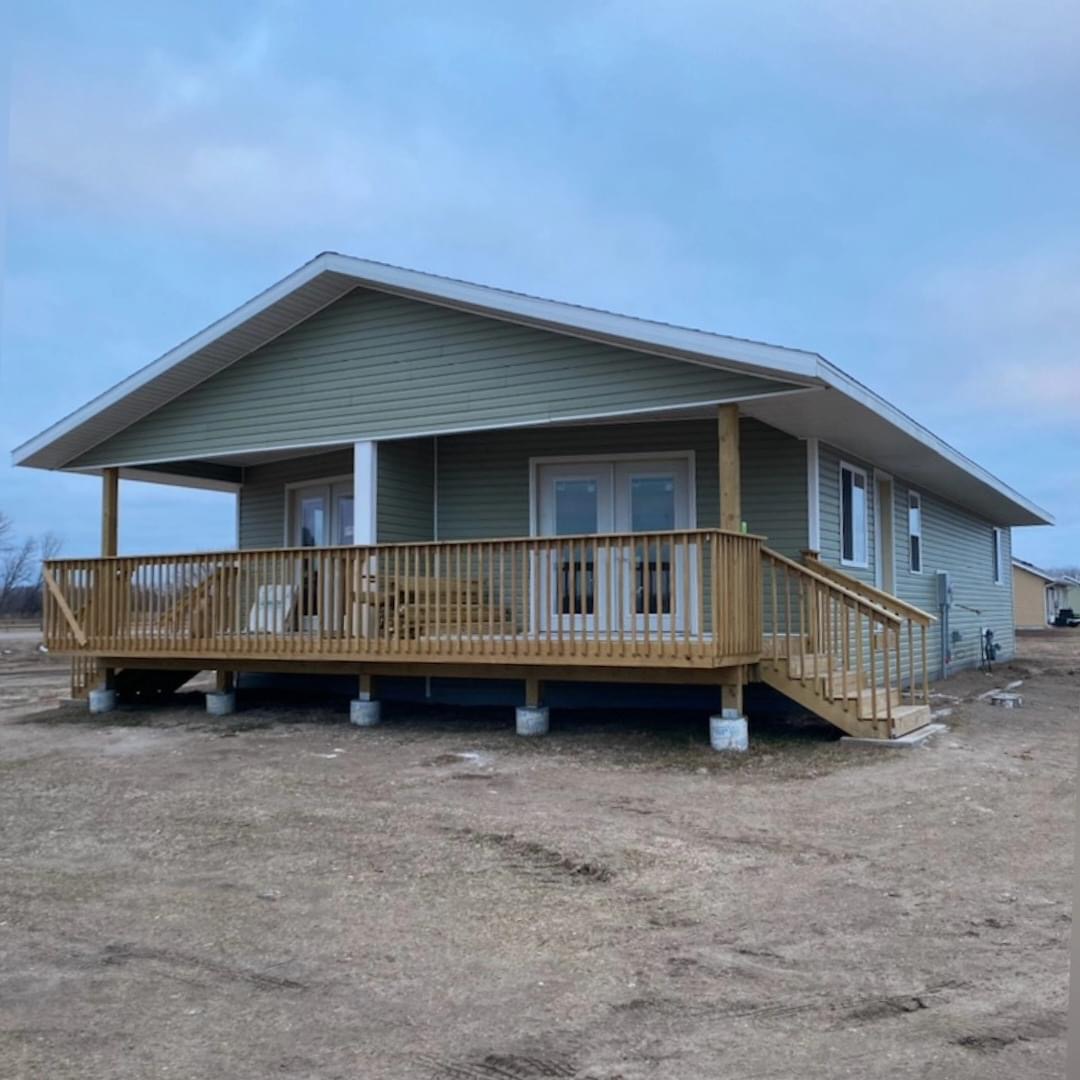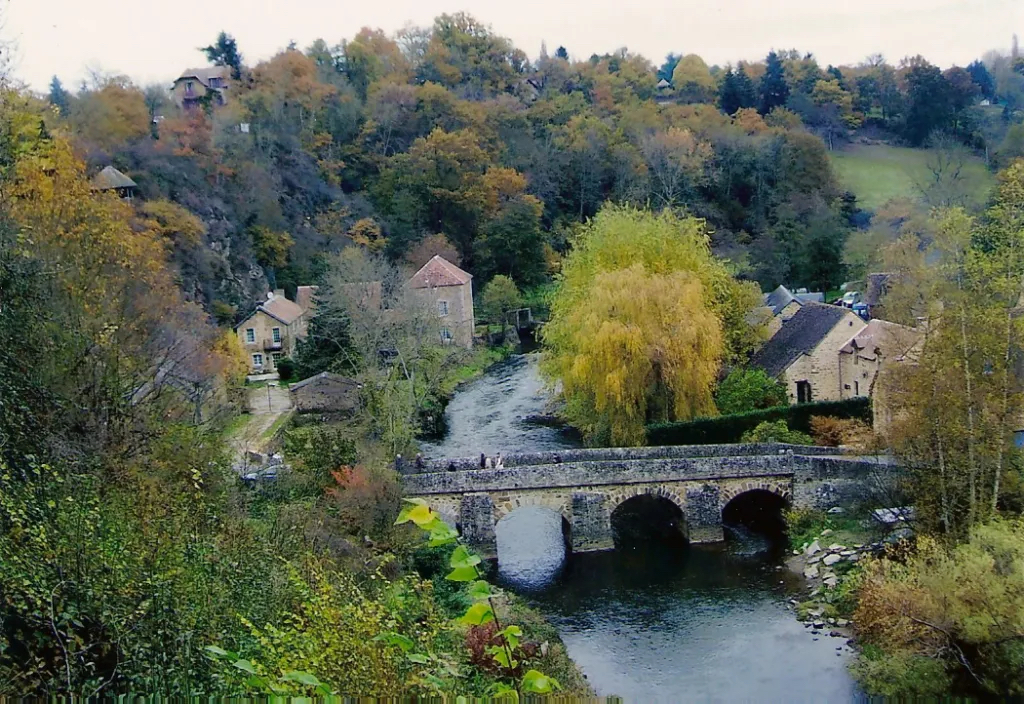Hemp a new economic frontier for tribal communities

The first hempcrete house in the state of Minnesota and the first multi family hempcrete building in the country. It was built using the spray method with the Ereasy Spray System.
MORTON, Minn. – Lakota relatives in Minnesota lead the way for a new economic frontier for tribal communities that considers tribal values, with hemp. Since the federal government removed the production of hemp and hemp seeds from the Drug Enforcement Administration’s (DEA) schedule of Controlled Substances and authorized it’s use in the Agriculture Improvement Act of 2018 (2018 Farm Bill), the Lower Sioux Indian Community in south central Minnesota has rapidly developed their Industrial Hemp Program. Danny Desjarlais is the Project Manager for the Tribe’s Industrial Hemp Construction Project and said the day of this interview that they are finishing up a couple of hemp housing projects, “We’re doing the finishing touches on an emergency housing duplex for temporary housing. We’re finishing a couple of decks on it today. Tomorrow we’ll be doing the interior lime plaster on a 4-bedroom hempcrete house.”
Desjarlais said they constructed a house out of pre-fabricated panels made of hempcrete, “it was a one bedroom one bath house and we put that house up in less than six hours.” Desjarlais said a man from North Dakota helped with that project and is currently the only person in the United States that is doing manufactured panels to sell. “That’s what we plan on doing. We have already started doing our own panels and blocks. We plan on being able to ship those panels and blocks anywhere. Hopefully, to other tribes that want to start building with hempcrete.”
Tribal communities have historically experienced higher rates of unemployment and poverty than non-tribal communities. Throughout the 20th century, tribal citizens gained dual citizenship, tribal nations gained self-governance and the right to pursue economic development.
By the 1990’s, the tribal gaming era was spreading across Indian Country with the passage of the Indian Gaming Regulatory Act. This proved to be a successful economic model for many tribes and has brought-in steady revenue and jobs to the reservation and surrounding areas, but the Economic Policy Institute said this has also left tribes “susceptible to volatile economic changes.”
In the beginning there were concerns that gambling would increase risky behaviors like alcohol and drug use and victimize an already vulnerable population. Also, there was concern that unbridled capitalism would erode tribal values. While concerns about gambling addictions are valid, there is no denying that tribal gaming has helped promote tribal economic development, self-sufficiency and strong governments.
Efforts in the last 30 years to establish the hemp industry in South Dakota on tribal lands have been stymied by federal and state obstacles. Cost is always an issue. But another obstacle to the development of the hemp industry is the superstition that hemp is marijuana and marijuana is a drug which Evangelicals believe is used in sorcery and malevolent magic.

Hemp mortar stone bridge constructed by the Merovingians around 500 A.D., Sarthe River Bridge France. Still in use today.
Both hemp and marijuana are varieties of the same plant species which is Cannabis sativa. But hemp has very low levels of THC, which is the psychoactive substance found in marijuana, and is classified as a commodity crop and non-intoxicating product.
Desjarlais said his tribe was also having a difficult time cutting through the stigma but it was a former tribal vice president who started pushing tribal leaders to invest in hemp about 12 years ago. Desjarlais told the story of how Earl Pendleton persuaded the tribal council to invest in hemp, “Earl told the Council ‘all we sell at these casinos is misery. What do you want your legacy to be, that you were an elected official and were just a caretaker of a casino for 4 years? or do you want to say I helped build something for my community?’”
Desjarlais said the tribe began the hemp program as soon as the federal government legalized it. “We’ve only been actively building for the past 7 months but we learned how to build a little over a year ago. We didn’t start processing hemp until a little over a year ago, so we have product to build with.”
The tribe hired different consultants to train staff in the different aspects of the industry. Desjarlais then hired a crew who started building in June of 2023. “The building aspect has been super-rapid. None of my crew were hired until June 27 and then we were already building a house and we had a hempcrete house built by July 21. Within a month we had our first house built.” Desjarlais said they have built 3 houses in 7 months.
Desjarlais credits past leadership and current leadership who have been willing to take the risk and invest all across the industry. “They hired consultants and not just any consultants. We have had some of the best in the world. We had Cameron McIntosh here from Pennsylvania. He’s the one who brought the spray technology from France, to be able to spray hempcrete. He came to the rez and was on our crew for three days and we sprayed an entire hempcrete house in 3 days. For the guys to be able to learn alongside him, the Michael Jordan of hemp-building, for our tribal council to invest in that, invest in bringing Cameron, invest in us by buying our own spray machine and everything it to go with it, to be able to build these houses at scale. This can help the housing shortage here but also in turn, make a product that we can sell to other communities, other tribes or even off-reservation to anyone who want to build with hempcrete.”
Desjarlais explained how the hempcrete is used. “The term itself is a little misleading, if we could go back and change the name maybe we would because everyone thinks it’s concrete. And so they think you can build the house out of that but hempcrete is nonstructural and non-load bearing, so you still have to have some type of conventional structure and the hempcrete is your wall insulation.” And you don’t need any drywall. Desjarlais said the hempcrete replaces all of your fiberglass insulation and any plastic wrap that is required. “It also replaces any drywall. In the interior you can finish the hempcrete with a lime plaster, which is also an all-natural product – just sand, lime and water – you put that on the wall and it stays a breathable natural material, allowing the walls to breathe.” He said the hempcrete needs to breathe.
Developing a hemp industry is a more sustainable model that embodies tribal values and can have a significant impact on waste. Desjarlais said this could help cut down the waste in our landfills which are full of construction materials. Desjarlais said the building industry alone fills our landfills, “It’s estimated that 40-to-50-pecent of landfills is construction waste, house-remodels or new builds.
“Hempcrete doesn’t go into the landfill. Hempcrete is 100 percent recyclable. If you want to tear down a hempcrete house and build a different one a different way or tear down a wall you grind that wall back up into the next mix and so nothing goes to the landfill, if you’re using all-natural products and you’re not covering it with some type of petrochemical siding.”
Building with hemp isn’t new. In fact, Europe has been investing in, developing and building with hempcrete for some time now, but it was also a material that had been used for centuries. “The longevity of a hemp house is said to last hundreds of years if you maintain them,” said Desjarlais. “For instance, if you had a lime plaster on the exterior you would just have to do a lime wash every few years. You are literally just washing the walls with water and lime, which is a natural product.”
Desjarlais said if you had siding it probably isn’t going to last hundreds of years so you might have to maintain the siding, “but the hempcrete itself continues to petrify over time. While it’s petrifying, the lime that is turning back to limestone in the mixture, it’s actually sucking carbon out of the air as well. So, the hemp itself when it’s growing is sequestering a whole bunch of carbon and also gives off a lot of oxygen.” Desjarlais explained that even with the carbon footprint created by the machinery used to process the hemp, the machinery to break down the lime and the creation of the hempcrete, it’s still a carbon negative material because of how much carbon the hemp sucks up while it’s growing. “Then when it turns back into limestone which it’s doing over time, it’s petrifying, it’s also sucking carbon out of the air. So it’s a carbon negative material but it’s also a carbon sequestering material over time. There is no other product like it. “
“France has been doing hempcrete for a long time,” said Desjarlais. ”We aren’t reinventing anything. There’s a bridge in France built in the 6th century that has pillars made from hempcrete.” Desjarlais also mentioned the Ellora caves in India, which are covered in hemp-lime plaster estimated to also be from the 6th century. A 2016 study found that it was a hemp mixture that preserved the caves from decay and prevented any insect activity.
“I have a couple different books each with numerous case studies of different hempcrete builds throughout Europe, Australia and South Africa. “
Desjarlais said hempcrete residents report having better health. “It’s all natural products that you’re living in. You’re not living in all these petrochemicals wrapped in a plastic bubble.”
Desjarlais said right now he’s working with a guy from Minneapolis talking about how to end homelessness by 2026. “It would be easy for any city to build housing or even teach those prospective homeowners.”
For more information contact Danny Desjarlais at danny.desjarlais@lowersioux.com
(Contact Marnie Cook at staffwriter@nativesunnews.today)
The post Hemp a new economic frontier for tribal communities first appeared on Native Sun News Today.
Tags: Top News
